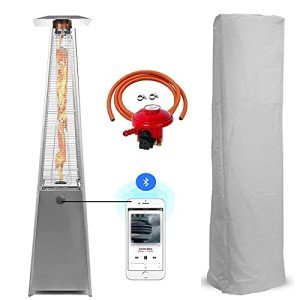Buying Gas Radiant Heaters: A Comprehensive Guide
Gas radiant heaters have gained popularity in the last few years for their efficiency and capability to supply immediate warmth. As more property owners and organizations try to find ways to keep their areas comfortable, understanding the functions, benefits, and factors to consider when acquiring these heating units can be really helpful. This article explores the intricacies of gas radiant heaters, helping prospective purchasers in making notified decisions.
What are Gas Radiant Heaters?
Gas radiant heaters are gadgets that utilize propane or gas to emit heat directly into a space. Instead of heating the air, they warm items and individuals in their area, providing convenience faster and effectively. Highly recommended Web-site are popular for both indoor and outdoor settings due to their flexibility and efficiency.
Key Features of Gas Radiant Heaters
- Direct Heating: Unlike traditional heaters that warm the air, gas radiant heaters offer direct heat, making them an efficient option for quickly heating up areas.
- Portability: Many models are offered as portable units, permitting them to be easily moved from one place to another.
- Fuel Variety: Gas radiant heaters can be powered by natural gas or propane, offering users flexibility based upon accessibility and preference.
- Adjustable Settings: Most gas radiant heaters featured adjustable heat settings, enabling users to tailor the level of warmth based upon their requirements.
Advantages of Gas Radiant Heaters
- Energy Efficiency: These heaters transform gas into heat efficiently, resulting in lower energy bills compared to electrical heaters.
- Quick Heating: Radiant heat is felt nearly right away, making these heaters ideal for sudden temperature level drops.
- Low Maintenance: Gas radiant heaters normally need less upkeep than electric designs, making them a problem-free alternative.
- Environmentally Friendly: When powered by clean gas, these heaters can be a more ecologically sustainable option compared to other heating techniques.
Kinds Of Gas Radiant Heaters
When it comes to choosing a gas radiant heater, it's vital to understand the various types readily available. Below are the most common options:
- Indoor Gas Radiant Heaters: Designed for indoor spaces, these heaters are usually vented or unvented and often featured integrated safety features.
- Outdoor Gas Radiant Heaters: Commonly used in patio areas or outdoor dining areas, these heaters are developed to hold up against the elements.
- Wall-Mounted Gas Radiant Heaters: A space-saving alternative, these systems are perfect for smaller spaces and can be outfitted with different heat outputs depending on the location's needs.
- Freestanding Gas Radiant Heaters: These portable designs can be used in different areas, best for those who need flexibility.
Buying Guide: How to Choose the Right Gas Radiant Heater
When acquiring a gas radiant heater, a number of aspects must be considered to ensure you choose the best model for your space:
1. Heating Capacity
- Determined in BTUs (British Thermal Units), the heater's capacity figures out just how much location it can effectively warm. Buyers should examine their particular requirements based on room size.
| Space Size (sq ft) | Recommended BTUs (for Gas Radiant Heaters) |
|---|---|
| 100 - 200 | 5,000 - 10,000 BTUs |
| 200 - 400 | 10,000 - 20,000 BTUs |
| 400 - 600 | 20,000 - 30,000 BTUs |
| 600 - 800 | 30,000+ BTUs |
2. Type of Gas
- Think about whether you will be utilizing propane or gas, as different heaters accommodate various fuel types.
3. Safety Features
- Search for models equipped with security features such as automatic shut-off valves, tip-over security, and oxygen depletion sensing units.
4. Setup Requirements
- Some heaters might need expert installation, particularly vented designs. Make sure to think about the costs and requirements associated with installation.
5. Mobility
- If versatility is essential, think about portable models that can be quickly moved from one location to another.
Setup and Maintenance
Gas radiant heaters are normally simple to set up, especially portable models. Nevertheless, vented options may require professional setup to ensure they meet regional security codes.
Upkeep typically involves:
- Regular cleansing to prevent dust accumulation.
- Inspecting gas connections and fittings for leakages.
- Ensuring security features are practical.
Idea: Regular checks around the unit can assist extend its lifespan and maintain security.
Frequently Asked Questions (FAQs)
Q1: Are gas radiant heaters safe for indoor use?A1: Yes
, as long as they are appropriately vented and equipped with necessary safety features, they can be safely used indoors.
Q2: Can gas radiant heaters be utilized in enclosed spaces?A2: Unvented gas heaters can position risks in enclosed areas due to potential suffocation or carbon monoxide accumulation. Always make sure adequate ventilation. Q3: How do I understand what size heater I need?A3: The appropriate size depends upon the location you plan to heat. Describe the BTU chart
above to identify your requirements. Q4: What is the difference between propane and gas heaters?A4: The primary distinction lies in their energy source
; propane is delivered by means of tanks, while gas is usually piped into homes. Q5: How can I maximize efficiency?A5: Ensure the heater is appropriately sized for your space, maintain it frequently, and consider utilizing it in combination
with other heating techniques for optimum convenience. Gas radiant heaters can be a terrific addition to any home or company, offering energy-efficient and quick heating solutions. By comprehending the different types, features, and factors to consider
when buying, purchasers can make educated decisions that fulfill their heating requires. With the ideal option, these heaters provide comfort, dependability, and a welcoming environment throughout cooler seasons.

